Department of Computer Science
VAPOC
VAPOC: Visualization, Analysis and Prediction of COVID-19
<< Return to Virtual Reality Laboratory
Current Students: Sri Teja Bodempudi (Doctoral Student)
Status: Current (NSF Award #2032344)
Collaboration: University of the District of Columbia (UDC).
News Articles: BSU's COVID-19 Research at VR Lab published in Capital Gazette, The Washington Post and U.S. News & World Report.(September 2020)
The goal of VAPOC (Visualization, Analysis and Prediction of COVID-19) project is to find out reasons as to why the black community is disproportionally impacted during the coronavirus pandemic. The VAPOC project combines neural networks predictions with human centric situational awareness and data analytics to provide accurate, timely and scientific strategy in combatting and mitigating the spread of the coronavirus plague in the black community. We believe that a combination of factors is responsible for the African Americans' susceptibility to the COVID-19. They hypothesize that pre-existing conditions, type of employment, and access to healthcare among other factors have significant influence in the higher death rate of African Americans during the COVID-19 pandemic. Their study is based on data visualization, pattern recognition, knowledge discovery, and scientific principles. To accomplish the above goal, the following 3 objectives are proposed;
- Design, develop and evaluate a COVID-19 model to determine vulnerability to coronavirus
- Development of a visualization and interaction tool to analyze COVID-19 patients' dataset in an immersive and non-immersive environment, and evaluate how graphical objects (such as data-shapes) developed in accordance with the user's requirements can enhance situational awareness
- Design, develop and evaluate a deep learning model to predict extent of COVID-19 damage to discharged patients.
Human-centric situational awareness and visualization are needed for analyzing the big data in an efficient way. One of the challenges is to create an algorithm to analyze the given data without any help of other data analyzing tools. This research effort aims to identify how graphical objects (such as data-shapes) developed in accordance with an analyst's mental model can enhance analyst's situation awareness. Our approach for improved big data visualization is two-fold, focusing on both visualization and interaction.
Data Visualization of of COVID-19 Pandemic in USA
Data Visualization of COVID-19 (Desktop Version)Data Visualization of COVID-19 (Mobile Version) Data Visualization of COVID-19 (Oculus Version)
Publications
- Sharma, S., Bodempudi, S.T., " Situational Awareness of COVID Pandemic data using Virtual Reality", IS&T International Symposium on Electronic Imaging (EI 2021), in the Engineering Reality of Virtual Reality, Burlingame, California,26-30 January 2021. (Accepted)
- Sharma, S., Bodempudi, S.T., " Real-time Data Analytics of COVID Pandemic using Virtual Reality", Proceedings of the 23rd International Conference on Human-Computer Interaction (HCI International 2020), Thematic Area: Virtual, Augmented and Mixed Reality, Washington DC, 24-29 July 2021. (Accepted)
- Sharma, S, Bodempudi, S.T., Reehl, A. " Real-Time Data Visualization to Enhance Situational Awareness of COVID pandemic ", Proceeding of the IEEE International Conference on Computational Science and Computational Intelligence (CSCI'20), Las Vegas, Nevada, USA, Dec 16-18, 2020.
- Rayan, T., Brown,A., Carillo, A., Sharma, S, " The Effect of COVID-19 on Various Racial Demograpics in the United States ", Proceeding of the IEEE International Conference on Computational Science and Computational Intelligence (CSCI'20), Las Vegas, Nevada, USA, Dec 16-18, 2020.
- Bodempudi, S.T., Sharma, S, Sahu, A, Agrawal, R, "Human-Centric Situational Awareness and Big Data Visualization", Proceeding of ISCA 28th International Conference on Software Engineering and Data Engineering (SEDE 2019) in San Diego, CA, USA, vol 64, pages 51--60, 2019.
Related Links
- Buzz Surrounding VR Data Visualization
- Who's Offering Data Visualization VR
- Scaling Cyberspace Graph Representations with Unity 3D
- The Emergence of Virtual Reality and Augmented Reality in the Security Operations Center
- Immersive Data Visualization with Virtual Reality
- How VR Revolutionizes Data Visualization
Papers
- Immersive and Collaborative Data Visualization Using Virtual Reality Platforms
- Exploring Data in Virtual Reality: Comparisons with 2D Data Visualizations
- Dynamic Visualization of Pedestrian Simulation Data - ResearchGate
- Novel Approaches to Data Visualization [ppt]
- CFD Post-processing in Unity3D
- Immersive Data Visualization
- Improving Big Data Visual Analytics withInteractive Virtual Reality
- Thesis on data Visualization
